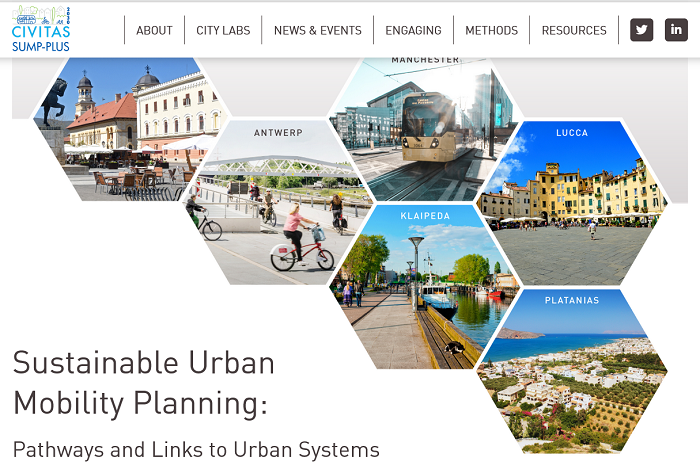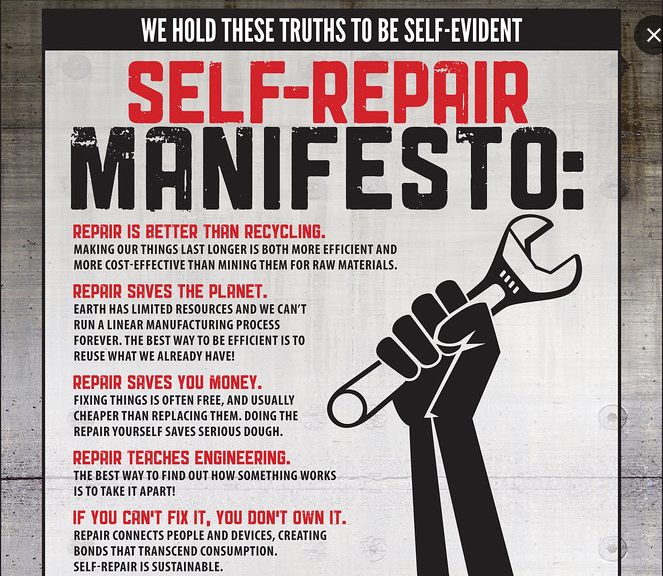


Enlargement of the European Union: Stop or Else?
21 September 2023
Green Consumerism: Between Ambition and Action
21 September 2023 The European Union (EU) has committed to carbon neutrality by 2050, requiring a 90% reduction in greenhouse gas emissions from the transportation sector. This has major implications for European cities and their ability to initiate and manage the transition. As part of the recently concluded European CIVITAS SUMP-PLUS project, Charlotte Halpern, a researcher at the Center for European Studies and Comparative Politics at Sciences Po, has focused on studying this important issue.
The European Union (EU) has committed to carbon neutrality by 2050, requiring a 90% reduction in greenhouse gas emissions from the transportation sector. This has major implications for European cities and their ability to initiate and manage the transition. As part of the recently concluded European CIVITAS SUMP-PLUS project, Charlotte Halpern, a researcher at the Center for European Studies and Comparative Politics at Sciences Po, has focused on studying this important issue.
A European Framework in Need of Clarification
The EU’s goal of carbon neutrality by 2050, in line with the Paris Agreement, requires reducing transportation sector emissions by 90%. This is a huge challenge, especially for cities, which account for nearly a quarter of transportation sector emissions. Many European cities have gone to considerable lengths to develop sustainable mobility alternatives. Recognising cities’ major role in the transition, the EU has supported their momentum with funding and a flagship tool, the Sustainable Urban Mobility Plan, which was introduced in 2013 and adopted by over a thousand cities.
While the promise of carbon-neutral, sustainable and liveable urban mobility has been gaining ground in political discourse, its deployment faces many constraints. In addition to the difficulty of changing behaviours and the need to adapt to the upheavals wrought by the emergence of the platform economy, many obstacles related to governance exist in all member states. It is complicated to integrate conflicting interests in defining collective goals while also strengthening the political capacities of urban public authorities to respond to numerous public and private actors, institutional patchworks, and resistance from impacted groups. Introduced more than ten years ago, tools such as the sustainable urban mobility plan are often outdated and must be reviewed in light of carbon neutrality objectives. For example, considering the multi-sector nature of mobility demand from economic sectors such as education, health, tourism and logistics offers additional opportunities to reduce emissions outside the transportation sector. Meanwhile, small and medium-sized cities are often overlooked in public policy priorities.
To accelerate the transition to sustainable and decarbonised urban mobility, the EU has adopted a new Urban Mobility Framework and has started overhauling mobility plans. It also initiated a ‘Cities Mission’ (Climate-Neutral and Smart Cities Mission) to support around a hundred cities seeking to lead the development of breakthrough solutions.
A Research and Innovation Action Project
Findings from theThe CIVITAS SUMP-PLUS project presented here aims to contribute to the EU-level debate by identifying levers likely to accelerate the design and implementation of sustainable urban transition trajectories. Coordinated by the city of Antwerp, it brought together 15 partners from nine European countries between 2019 and 2023: six cities and/or transportation authorities, four consultancies, two associations of local authorities and three universities. At the Center for European Studies and Comparative Policy (CEE), I set up a team tasked with understanding the governance issues and public policy processes in each city and identifying the cities’ political capacities (1)CIVITAS SUMP-PLUS Newsletter (July 2022), devoted to the Governance and capacity building component...
Conducted in close collaboration with the partner cities, this work allowed us to test our research hypotheses on the governance of sustainable mobility transitions in various contexts and to develop solutions to equip the cities to execute this transition. I heavily drew on the results of previous European projects in which I participated. One was the CREATE project (2015–2018), an analysis of historical policy developments to reduce the role of cars in five large European cities. It showed that changes needed to achieve sustainability objectives could not be solely based on technical solutions, such as vehicle electrification, but also had to involve a range of public policies: introduction of sustainable mobility alternatives (public transportation, walking, cycling), reorganisation of public space, and digital solutions based on data production. It also noted that cities showing the most progress on the ground were the ones that had increased their political capacity to manage change, be it linked to the arrival of a new political majority, increased human and financial resources, administrative reorganisations, or a significant transfer of competencies as part of decentralisation reforms.
Next, the MORE project (2018–2022), which covered the reallocation of space devoted to cars and ensuing conflicts that could arise, identified different strategies for cities to assert themselves as true managers of their road space. This may seem obvious, but successful cities did not just have a strategic vision and very long-term objectives: they also wielded concrete operational tools. For example, Lisbon partnered with universities and platform economy companies to meet its need for urban mobility data and analysis capabilities. It also diversified staff profiles to include urban planners and sociologists in addition to engineers and transportation economists. A second imperative was to overcome the dilution of responsibilities. This involved entrusting the responsibility for execution of the objectives and implementation of monitoring to clearly identified actors, thus enabling them to develop political capacity over time. This was notably the case for the integrated transportation agencies of Greater London and Budapest – a situation that I subsequently observed in Greater Manchester.
During the third project – CIVITAS SUMP-PLUS – and in partnership with the consortium, I developed a survey protocol aiming to deepen understanding of cities’ capacity to design and implement a pathway to sustainable mobility in cities of different sizes. The consortium was interested in extending the study of small and medium-sized cities, which often have less advanced sustainable mobility approaches, as planning and funding solutions have been designed for large cities. We also wanted to identify additional opportunities to reduce transportation-related carbon emissions in other sectors.
A Research Approach Adapted to the COVID-19 Crisis Context
We began by creating profiles of participant cities, describing the trajectories of each one over the past 20 to 30 years. The pandemic prevented us from carrying out the planned fieldwork. When possible, we drew on documentary research and virtual exchanges to create an inventory of the governance resources cities had used, the obstacles encountered, and the levers they deployed to galvanise support from residents and users, develop strategies to influence national and regional authorities, and establish partnerships with economic actors.
We then supported the work of partners in a co-building approach to accompany these six cities in the design and deployment of ‘City Labs’ seeking to accelerate their transition. My dual expertise as a researcher specialising in comparative public action and as the academic director of executive master’s program on regional governance and urban development was very useful here. Based on the city profiles, the CEE team worked with each of the cities to define actions to strengthen their implementation capacities (Klaipeda in Lithuania, Platanias in Greece, Alba Iulia in Romania), to develop crosscutting action across different public policy sectors at the metropolitan level (Lucca in Italy, Antwerp in Belgium), and to identify new opportunities to reduce carbon emissions beyond the transportation sector itself (Greater Manchester in the UK).
Overcoming Fragmentation Through Governance Reforms
Accompanying these communities, which are at different stages of their transition, allowed us to draw several additional lessons. First, we were able to dispel a common misconception: sustainability and carbon neutrality are not the prerogative of large metropolises. In fact, size is less of a factor than means and skills. Smaller cities are generally short of these but can compensate for the deficit by cooperating with their neighbours. These alliances, which enable skill pooling, can lead to the creation of a joint transportation authority, such as Romania’s pioneering Alba Iulia, or to the development of a first sustainable urban mobility plan, such as Platanias, despite the absence of legislative backing in Greece. More flexible cooperation can also be efficient. All the studied cities showed rapprochements among private actors, civil society and city networks to pool resources and test new solutions.
One-off funding has sustained tactical urban planning operations and allowed cities to experiment. In Antwerp, the Street-gardens program supports bluing and greening streets at the intersection of sustainable mobility and climate change adaptation goals, for example. Yet our findings also supported more advanced cities seeking to go beyond experimentation by intensifying their efforts. Indeed, one-off solutions are sometimes window dressing, rarely evaluated, and do not always include reflection about their political and social impacts. Moreover, incentives and one-off experiments will not suffice to achieve carbon neutrality.
Cities with well-developed public transportation networks and bicycle paths in the city centre want to go further by extending their model to the metropolitan area and reduce commuting. This is the casein Klaipeda: with its neighbours, the city has developed bicycle path networks designed for mobility related to tourism and, in the future, commuting. The change of scale also involves more restrictive solutions based on regulations and penalties. This is the case for the city centre access restrictions in the form of low-emission zones (LEZs), as in Antwerp and Lucca, which have conducted lengthy consultation processes with users and residents and have coupled LEZs with video surveillance systems to monitor enforcement.
Fostering Cross-sectoral Collaborations
Another approach to achieving a change of scale is to adopt an integrated approach of public policies that fully integrates sustainable mobility strategies with climate plans with more ambitious objectives. Some local authorities are proposing to transcend silos in their services in order to engage in cross-sector collaboration and identify opportunities to reduce carbon emissions in sectors that generate mobility, such as tourism, logistics, education and health. In addition to decarbonising school and tourism-related transportation, for example, this might involve reorganising activities to limit their dispersion, or even avoiding certain trips thanks to the development of new technologies. Transport for Greater Manchester has made cross-sector leverage a cornerstone of its carbon reduction strategy. Building on the adoption in 2020 of a ‘zero carbon’ strategy by the National Health Service (NHS), the UK’s public health agency, the Greater Manchester City Lab brought together SUMP-PLUS consortium members, the transportation authority, professionals from the medical and social sector, economic players on the field, and patient and user representatives. A joint action plan and dedicated steering body should help decarbonise this mobility by 2038, thanks to the turnover of vehicle fleets for patient transportation and medication deliveries, development of virtual consultations, and reorganisation of primary care systems at the neighbourhood level.
Recommendations for Cities … but Also for States and the EU
Beyond funding opportunities, cities can thus wield various governance levers to become true leaders in sustainable mobility. However, some of the identified obstacles depend on other decision-making levels, so we also formulated recommendations for states and the EU. For example, states must urgently deploy sustainable and decarbonised mobility measures throughout their territory by introducing measures focused on rural, semi-rural and exurban areas.
Meanwhile, the EU could offer more opportunities for urban public authorities to contribute to decision-making processes, especially for regulations that directly concern them. Unlike regions, cities do not currently have formal EU-level representation. To overcome this important limitation, many of them have organised into EU-level networks such as Eurocities, Polis, ICLEI Europe and the European Covenant of Mayors for Climate and Energy.
SUMP-PLUS project findings, be they governance solutions or evaluation and capacity-building tools to design and manage transitions, have been disseminated to various audiences (elected officials, technicians, administrations, user groups, student communities, citizens, etc.) for sharing with other cities facing the same challenges (Informed Cities Forum in Grenoble in November 2022). In addition to the reports and policy briefs produced by SUMP-PLUS, training materials for urban mobility professionals have been made available on the CityConsult training platform of the ICLEI Europe city network and to members of the International Association of Public Transport (UITP), and the results have been presented at conferences dedicated to mobility professionals (ECOMM), or organised by the European Union’s Directorate General for Mobility and Transport. We organised a study trip to Antwerp for the students of the Executive Master of Regional Governance and Urban Development. Project deliverables include academic publications, methods briefs, as well as very concrete tools: for example, our team produced a self-assessment questionnaire on mobility sector governance that has been tested by the cities involved in the project, and that could be used by others.
The author thanks Véronique Etienne and Hélène Naudet for their support drafting this text.
Learn more:
- The CIVITAS SUMP-PLUS project website
- The CIVITAS SUMP-PLUS Ressources
- Vidéo – Presentation of the main findings
- Policy Brief: Building Governance Capacity To Achieve Sustainable Urban Mobility Transitions (Charlotte Halpern, Dan Broghan, Anna Emilie Wehrle)
- Vidéo – Charlotte Halpern on enabling governance to support sustainable mobility planning
- Listen to the podcast – ‘Charlotte Halpern On Sober Cities’, Conversation with Sergei Guriev, June 2023
Charlotte Halpern is a researcher at the Center for European Studies and Comparative Politics at Sciences Po. An expert on public policy transformations, which she analyses from a comparative perspective, she has developed deep research and teaching experience in environmental and sustainable city policies. She is preparing for accreditation to lead research on the governance of ecological transition policies in European cities. Charlotte co-leads the ‘environmental policies’ axis of the Laboratory for Interdisciplinary Evaluation of Public Policies (LIEPP), emblematic of the collaboration with Paris Cité University, as well as the Executive Master on Regional Governance and Urban Development of Sciences Po.
Notes
| ↑1 | CIVITAS SUMP-PLUS Newsletter (July 2022), devoted to the Governance and capacity building component.. |
|---|



